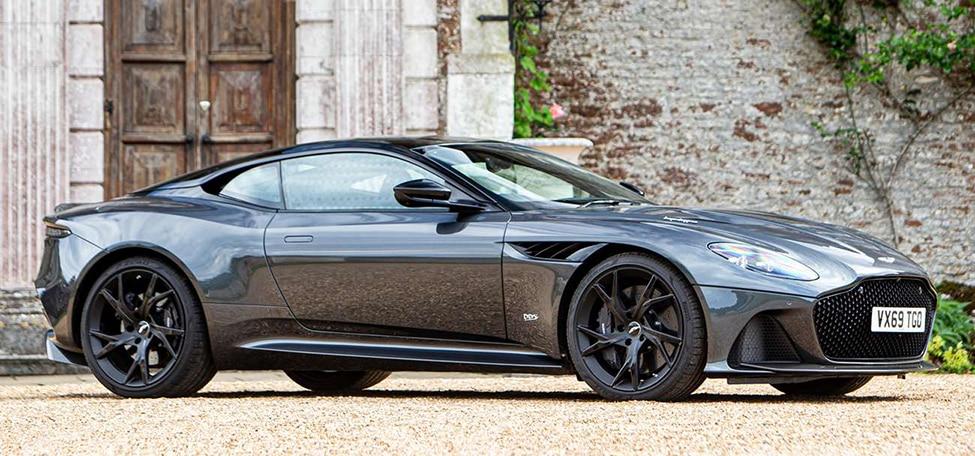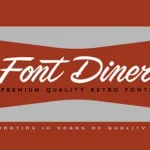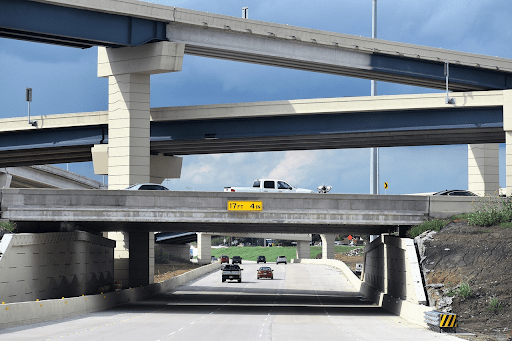
Restoring a classic car can be expensive. It is also a long-term commitment and requires research to find a vehicle that meets your goals.
A classic car’s value depends on its rarity, condition, and completeness. It should also be in working order.
Unfortunately, it is easy to decrease a classic car’s value without realizing it. Mileage, for example, is a big deal and can devalue a car even before it’s driven.
Restoring a Vehicle
Restoring a classic car involves taking an older, often worn-out vehicle and bringing it back to its original glory. This process can take a lot of time, patience, and skill. If done properly, it can also increase the value of a classic car. However, it’s important to understand what factors go into determining a vehicle’s value before you start the restoration process.
The first step is to research the make and model of the vehicle that you’re considering restoring. This will help narrow down your options and ensure that you’re choosing a model that will meet your goals. It’s also helpful to familiarize yourself with the history of the car, including any notable variations or modifications that may affect its overall value.
Once you’ve narrowed down your options, it’s time to start planning a budget. Be realistic about the amount of money you’re willing to spend on the project and how much work it will entail. Remember that the more detailed your restoration is, the higher the price will be.
Another factor that goes into determining a classic car’s value is its condition. This includes everything from dents to the color of the paint. It’s also important to make sure the vehicle is running and that it’s up to date for regular maintenance.
It’s important to note that the type of maintenance you perform will also play a role in determining a vehicle’s value. For example, if you decide to swap out the engine in your classic car for a more modern one, this could decrease its value.
Finally, the mileage of a classic car can play a role in its value. While the number of miles on the odometer won’t necessarily decrease the value, too many can have an effect.
The most important thing to keep in mind when restoring a classic car is that it should be enjoyable. While it may be a challenge at times, the end result is worth the effort. And, of course, it’s always a good idea to have a professional appraiser inspect the car before making any major decisions or investments.
Getting Started
Classic car restoration can be a time-consuming and expensive project. Before jumping in, it’s important to determine your goals and set a budget for yourself. You don’t want to get halfway through the project and find that you can’t finish it because of money constraints or that it was not worth the investment.
The first step is evaluating the vehicle’s condition. You will need to take photos and make notes of what needs to be done to restore the car. You will also want to evaluate whether the vehicle has any safety upgrades or modifications that need to be made to meet current state laws. These modifications can have an impact on resale value, so you will need to factor this into your budget.
Once you know the condition of the vehicle and its current level of restoration, you can begin to come up with an estimate of its value. A fully restored car will sell for more than one that is just starting to be brought back to life. You will also need to assess the quality of any work that was done on the vehicle in the past. If the previous restoration was done poorly, it can lower the car’s overall value.
It is also important to consider the demand for this model and automaker. Some cars are in high demand and can sell for a lot of money at auction or through private sales. Other times, the market is sluggish, and vehicles can sit on dealer lots for long periods of time. It is important to stay up to date on what is happening in the industry so you can make informed decisions about resale and restoration costs.
Modifications can make or break a classic car’s value, depending on how tasteful they are and what they were added for. For example, adding a modern engine to an original 1970 Chevelle SS 454 may decrease its value, while upgrading the transmission and some other tasteful modifications can increase it. It is also essential to check with the state’s Department of Motor Vehicles to see what modifications are legal in your area before making them.
Planning a Budget
Classic car enthusiasts can spend a lot of money restoring their vehicles. Some modifications can increase value, while others decrease it. The key is to research and determine a particular model’s value before making any major changes. You should also consider your reasons for restoring the car, whether you intend to keep or sell it later. This will help you set a budget and stay within it throughout the process.
It’s important to understand how much you can afford to spend on a vehicle before going to an auction. This will prevent you from overspending or getting into a deal that’s not in your best interests. You can use buyer’s guides and online resources to get a feel for the market and how much classic cars are worth.
Another factor that can influence classic car auction values is the condition of the vehicle. A car in poor or damaged condition is likely to be worth far less than a similar model in pristine condition. This is because it will take more time and resources to restore a car that has suffered damage.
If you’re considering purchasing a classic car at an auction, setting a budget beforehand is important. This will prevent you from overspending and ensure that you’re not paying more than the vehicle is worth. It’s also a good idea to consult with an expert before buying a classic car to ensure it meets your restoration goals and fits your budget.
Inflation can also affect classic car auction values, making it harder to repair a vehicle and difficult to find spare parts for older models. This can impact the overall value of a vehicle and may even make it more expensive to insure.
Whether you’re looking for the perfect classic car to restore or want to buy one at an auction, it’s essential to do your research before taking action. Start by determining what you want to achieve and why, then work out the cost of completing your project. Be sure to take into account any costs associated with transporting the car, as well as your personal spending limit.
Finding a Car to Restore
If you have the time and money to devote to classic car restoration, it can be a very rewarding experience. Not only can you take a once-tired vehicle and make it look and run like new, but you also can potentially turn a nice profit when the project is complete. However, before you start working on your classic automobile, it’s important to understand what factors will influence its final price at auction or sale.
One of the most important factors that will determine how much your classic car will ultimately fetch is its current level of restoration. A fully restored vehicle will sell for a higher price than one still in need of work, and it can be difficult to judge how much will need to be spent on a project before it is complete.
Other important factors include the car’s age and rarity. Newer models are typically more valuable than older ones, as they may have subtle differences that make them more appealing to collectors. In addition, certain rare cars will command a premium because they’re just so hard to find.
Once you’ve found a vehicle that meets your criteria, it’s important to negotiate the price. Use the services of a professional appraiser to help you establish a fair value based on its condition, year, and other factors that affect classic car values. Once you’ve settled on a price, have the vehicle professionally appraised again to ensure that it isn’t overpriced.
It’s important to keep in mind that mileage will usually impact the final price of a classic car, but it’s less of an issue than it used to be because many restorers reset the odometer when they begin a revitalization project. However, extensive rust or missing parts can dramatically reduce the car’s overall value.
Once you’ve established the basic components of your restoration, it’s time to get started. This will probably be the most time-consuming part of the entire process. It will involve dismantling the vehicle to remove the engine, transmission, and other mechanical parts and to repair or replace them as needed. Rusty areas will need to be cut out and welded, and large dents should be replaced with new panels.
RELATED ARTICLES
Latest Articles
 Mastering the Art of Machine Vision: Choosing the Perfect Lens for Optimum PerformanceIn TechnologyMay 2, 2024Key Takeaways: Machine vision is a technology that […]
Mastering the Art of Machine Vision: Choosing the Perfect Lens for Optimum PerformanceIn TechnologyMay 2, 2024Key Takeaways: Machine vision is a technology that […] Unlocking Success: Mastering Bank PO Interview PreparationIn EducationApril 24, 2024For banking careers, PO interviews stand as formidable […]
Unlocking Success: Mastering Bank PO Interview PreparationIn EducationApril 24, 2024For banking careers, PO interviews stand as formidable […] The Strategic Value of Purchasing FontsIn TipsApril 18, 2024In today’s visually driven world, fonts are more […]
The Strategic Value of Purchasing FontsIn TipsApril 18, 2024In today’s visually driven world, fonts are more […] Revolutionizing Business: How AI Transforms Customer Experience in the Inflatable IndustryIn BusinessApril 16, 2024Inflatable water slides are the epitome of summer fun, […]
Revolutionizing Business: How AI Transforms Customer Experience in the Inflatable IndustryIn BusinessApril 16, 2024Inflatable water slides are the epitome of summer fun, […] Most Asked Microservice Interview Questions For 2024In TechnologyApril 2, 2024To keep up with changing trends in the tech industry […]
Most Asked Microservice Interview Questions For 2024In TechnologyApril 2, 2024To keep up with changing trends in the tech industry […] Best JavaScript and CSS Library In 2024In TechnologyApril 2, 2024With the ever-expanding functionality of web […]
Best JavaScript and CSS Library In 2024In TechnologyApril 2, 2024With the ever-expanding functionality of web […] Front-End Development Trends to Follow in 2024In TechnologyApril 2, 2024For better engagement, the front-end development of […]
Front-End Development Trends to Follow in 2024In TechnologyApril 2, 2024For better engagement, the front-end development of […] Simplifying Mealtime: Meal Prepping for a Family of FourIn UncategorizedMarch 22, 2024In the hustle and bustle of daily life, planning and […]
Simplifying Mealtime: Meal Prepping for a Family of FourIn UncategorizedMarch 22, 2024In the hustle and bustle of daily life, planning and […] How to Freeze Dry Candy With And Without a Machine?In FoodFebruary 27, 2024A candy lover constantly searches for novel and […]
How to Freeze Dry Candy With And Without a Machine?In FoodFebruary 27, 2024A candy lover constantly searches for novel and […] How to Get Something Out Of Your Eye Immediately?In healthFebruary 27, 2024Getting something inside your eyes can be frustrating […]
How to Get Something Out Of Your Eye Immediately?In healthFebruary 27, 2024Getting something inside your eyes can be frustrating […] The Evolution of Remote Control Technology: From RC Cars to DronesIn TechnologyFebruary 22, 2024Remote control technology has come a long way since […]
The Evolution of Remote Control Technology: From RC Cars to DronesIn TechnologyFebruary 22, 2024Remote control technology has come a long way since […] Unveiling the most popular carnival costumes: A colorful parade of creativityIn FashionFebruary 19, 2024In the world of festivities and merrymaking, few […]
Unveiling the most popular carnival costumes: A colorful parade of creativityIn FashionFebruary 19, 2024In the world of festivities and merrymaking, few […]
stopie.com is a participant in the Amazon Services LLC Associates Program, an affiliate advertising program designed to provide a means for sites to earn advertising fees by advertising and linking to Amazon.com.
Clicking on an Amazon link from stopie.com does not increase the cost of any item you purchase.
We will only ever link to Amazon products that we think our visitors may be interested in and appreciate learning more about.



